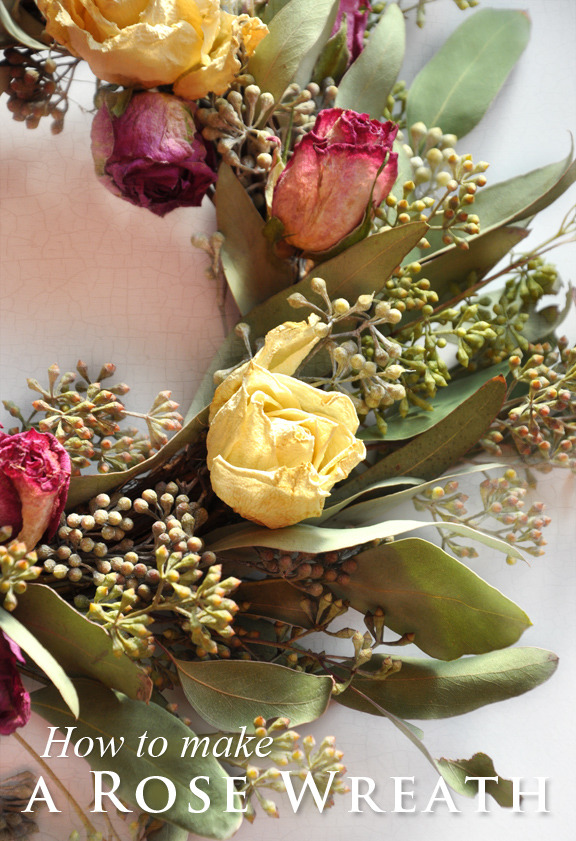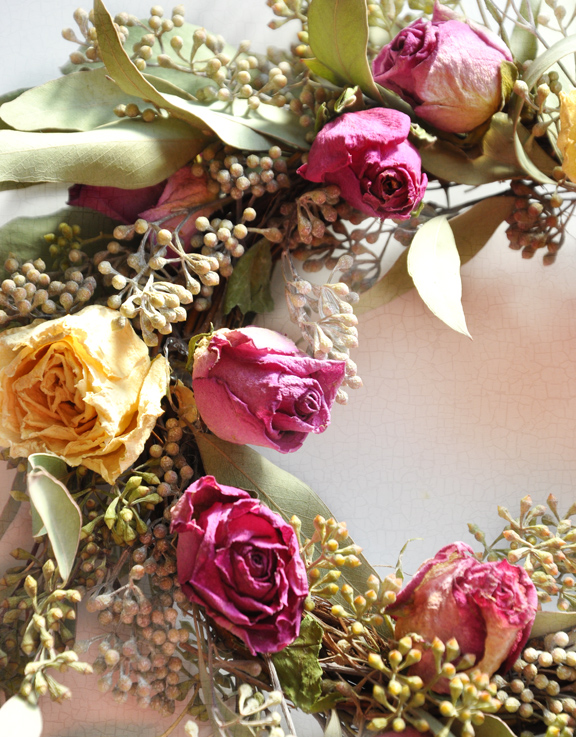When I found this owl in a local shop it looked a little like a wood carving, but in reality it was plastic. It occurred to me that the owl might look more elegant, if it was painted it. So I spray painted it ivory (using one of the new spray paints that adheres to plastic).
The glass dome or cloche came from a tacky thrift shop clock.
When I put the owl under the glass dome it seemed unfinished, so a came up with a little DIY stand. Here is how my husband and I made it:
A few Notes about the Method: You could simply glue the two pieces of wood together with a good quality wood glue, prime and paint the finished stand, but the bond between the two pieces of wood wouldn't be particularly strong.
If you have the patience, this longer more sturdy method of joining the two pieces of wood will create a much stronger finished piece.
To make the Cloche Stand you will need:
• A wooden circle with a routed edge (Michaels)
• A wooden pedestal (Michaels)
• Gorilla or Wood Glue
• 1/8" Dowel
• Measuring Tape
• Pencil
• Punch
• Electric Drill and 1/8" drill bit
• Wire cutters
• Primer (if you aren't using a paint & primer in one)
• Latex Paint in a color of your choice (I used ivory paint).
• Varathane Professional Clear Finish 'Satin' (water based)
Step 1: You could use the Michaels wood pedestal as is, but I thought the it was a bit high for my purposes, so I had hubby twist the bottom section off. The original pedestal was held together with a light bit of glue, so the it easily broke into two sections with a few twists of the wrist.
Set aside the bottom section of the original pedestal for some other project. Turn the remaining half upside down. What was once the pedestal's top, now becomes the pedestal's bottom.
Step 2: Prime the pedestal and the wooden circle. The circle will be used to make the top of the finished stand.
Step 3: Next you have to calculate the centre of your pedestal top. Do you remember your high school geometry? Me neither! Thank goodness this isn't as hard to figure out as it looks!
Turn your wood circle over so the underside is facing up.
Take your measuring tape and swing it in an arc around the circumference until the markings on the tape measure line up with the outer edge of the circle. My tape measure lined up at 6" making 3" the centre of my wooden circle.
Step 4: Repeat the process on the diagonal. Make another mark with your pencil to create an X to indicate the circle's centre.
Step 5: A drill can easily slip, so it is a good idea to use a punch to make a shallow hole to guide for the end of drill.
Step 6: You don't want to drill a hole all the way through your top, so it is also a good idea to look from the side and get a basic idea of how deep the drill needs to sink into the wood.
Step 7: Drill a hole to a depth of approximately 3/16".
A small piece of dowel linking the top and pedestal base will create a strong join.
Step 8: Now you need to calculate the length of the dowel required to make the join. Insert the end of your dowel into the pedestal and mark the depth of the drill hole with a pencil.
Step 10: Take a pair of wire cutters and twist the dowel to score the final pencil line. Now cut the dowel with the wire cutters.
Step 11: Put some glue on the end of the dowel and insert it into the top of the pedestal.
Step 12: Once the dowel is in place, put more glue on the exposed end of the dowel and on the underside of the circular top.
Step 13: Join the circle top and the pedestal together. Twist the top piece with a circular motion to spread the glue. Set the finished stand aside and allow the glue to dry.
Step 14: At last you can paint the finished pedestal stand!
Step 15: Optional: I like to add a clear top coat just to make the finished piece more durable. If you opt to do this as well, brush on a top coat of water based Varathane. Allow it to dry.
And there you have it! A nice stand that can give your cloche that extra bit of style!




















